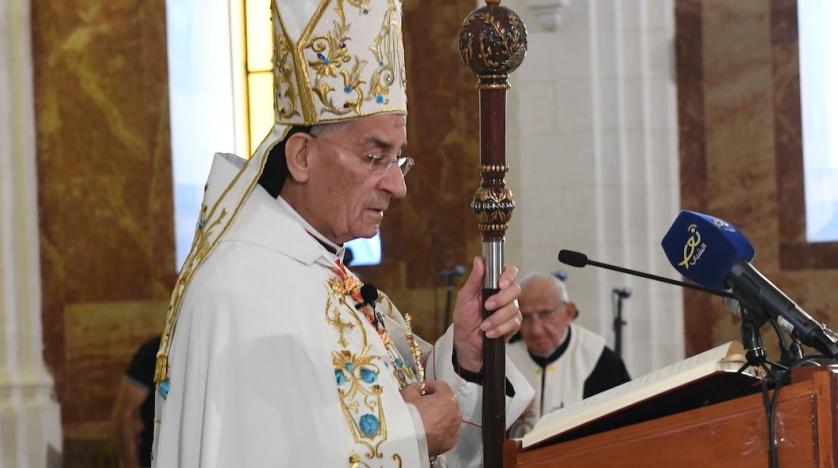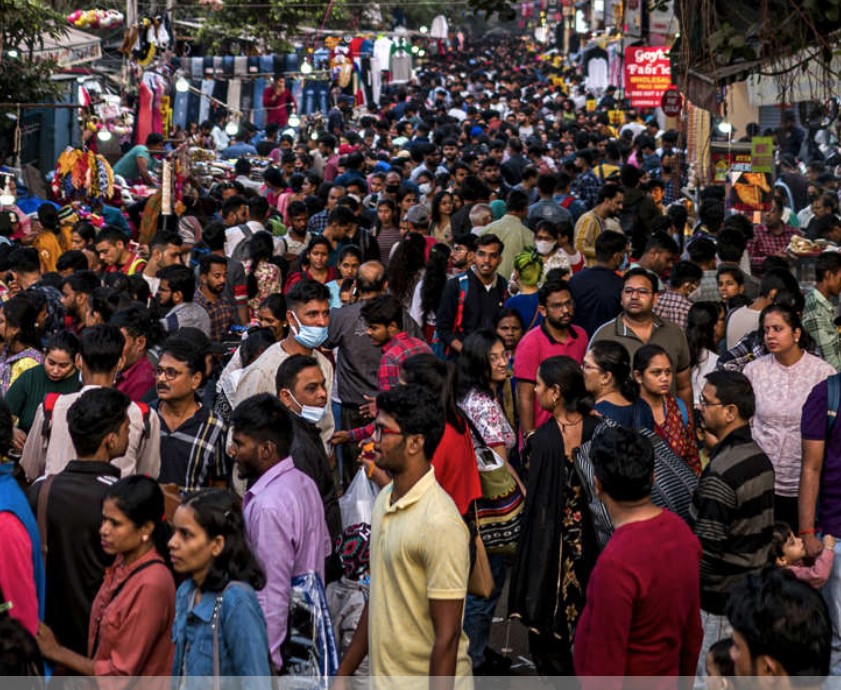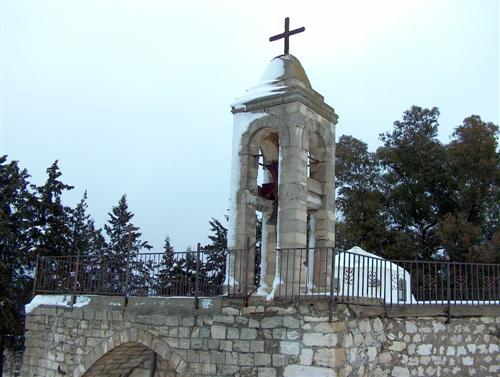
by indcatholicnews.com -- On his first official visit to the UK, His Beatitude Cardinal Mar Beshara Boutros Al-Rahi, Patriarch of Antioch, and head of the Maronite Church, has taken part in a series of meetings with church leaders, politicians and Lebanese delegations yesterday. He was welcomed to Lambeth Palace by Archbishop of Canterbury. The Archbishop said: "We prayed together for Christians in the Middle East, especially Lebanon - a place close to my heart." The Patriarch then went on to the Palace of Westminster, where he took part in a number of official meetings, most notably with Lord Tariq Ahmad, Minister of State for the Middle East; Sarah Mackintosh, Deputy National Security Adviser, who has responsibility for the Middle East; and with Parliamentarians, organised by the All Party Parliamentary Group to the Holy See.
The Patriarch was accompanied by Archbishop Paul Boulos El-Sayah; His Excellency Rami Mortada, Ambassador of Lebanon to the United Kingdom; and Mr Maran Francis, Counsellor at the Lebanese Embassy. In recent days, His Beatitude has also met with representatives of various Lebanese parties at the Maronite Parish in London, for which meeting he was accompanied by Abbot Hadi Mahfouz, General Superior of the Lebanese Maronite Order, and Father Fadi Kmeid, Maronite parish priest in London.

Story by Marquise Francis -- AFP -- India is expected to surpass China and become the world’s most populous nation within the next three months, according to a recent report by the United Nations’ population division, marking a seismic shift on the global stage in a trend with significant social and economic impact for both countries. “Most people think India's economy is still a fraction of what it could be in the future, which means there's so much promise,” Dr. Audrey Truschke, an associate professor of South Asian History at Rutgers University, told Yahoo News, adding that much of the potential is due in large part to India being “such a young country.”
Of the rapidly growing 1.41 billion people in India, about 1 in 4 are under the age of 15 and nearly half are under 25. By comparison, China’s population is about 1.45 billion, but those under 25 make up only a quarter of the population. “The Indian subcontinent has always supported a robust human population,” Truschke said. “India has also long been compared to China, and they have for a long time traded with one another. So as much changes over the course of human history, that's something that recurs — both the dense population of the subcontinent, as well as the comparison with China.” Since 1950, India and China have accounted for an estimated 35% of the world’s population growth, with China emerging as a global industrial power. Combined, the two population epicenters are a significant slice of the world’s roughly 8 billion people.
By Brad Kallet, Editor at LinkedIn News – Your Instagram navigation bar is going to look a bit different in February. Beginning …
BEIRUT (AP) — Lebanon’s militant Hezbollah group on Tuesday condemned the cartoons published recently by the French satirical magazine Charlie Hebdo that …
Khazen History


Historical Feature:
Churches and Monasteries of the Khazen family

St. Anthony of Padua Church in Ballouneh
Mar Abda Church in Bakaatit Kanaan
Saint Michael Church in Bkaatouta
Saint Therese Church in Qolayaat
Saint Simeon Stylites (مار سمعان العامودي) Church In Ajaltoun
Virgin Mary Church (سيدة المعونات) in Sheilé
Assumption of Mary Church in Ballouneh
1 - The sword of the Maronite Prince
2 - LES KHAZEN CONSULS DE FRANCE
3 - LES MARONITES & LES KHAZEN
4 - LES MAAN & LES KHAZEN
5 - ORIGINE DE LA FAMILLE
Population Movements to Keserwan - The Khazens and The Maans
ما جاء عن الثورة في المقاطعة الكسروانية
ثورة أهالي كسروان على المشايخ الخوازنة وأسبابها
Origins of the "Prince of Maronite" Title
Growing diversity: the Khazin sheiks and the clergy in the first decades of the 18th century
Historical Members:
Barbar Beik El Khazen [English]
Patriach Toubia Kaiss El Khazen(Biography & Life Part1 Part2) (Arabic)
Patriach Youssef Dargham El Khazen (Cont'd)
Cheikh Bishara Jafal El Khazen
Patriarch Youssef Raji El Khazen
The Martyrs Cheikh Philippe & Cheikh Farid El Khazen
Cheikh Nawfal El Khazen (Consul De France)
Cheikh Hossun El Khazen (Consul De France)
Cheikh Abou-Nawfal El Khazen (Consul De France)
Cheikh Francis Abee Nader & his son Yousef
Cheikh Abou-Kanso El Khazen (Consul De France)
Cheikh Abou Nader El Khazen
Cheikh Chafic El Khazen
Cheikh Keserwan El Khazen
Cheikh Serhal El Khazen [English]
Cheikh Rafiq El Khazen [English]
Cheikh Hanna El Khazen
Cheikha Arzi El Khazen
Marie El Khazen